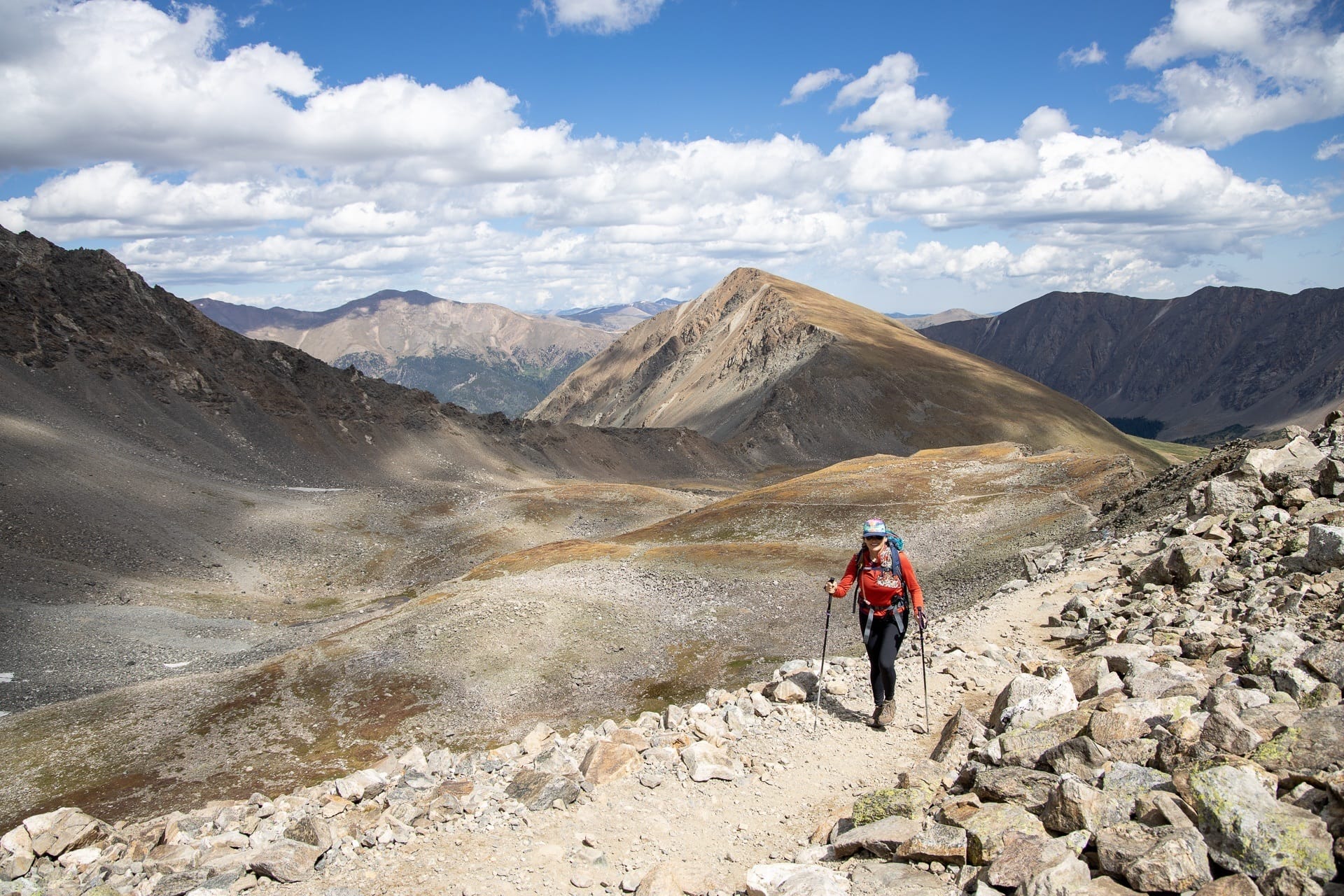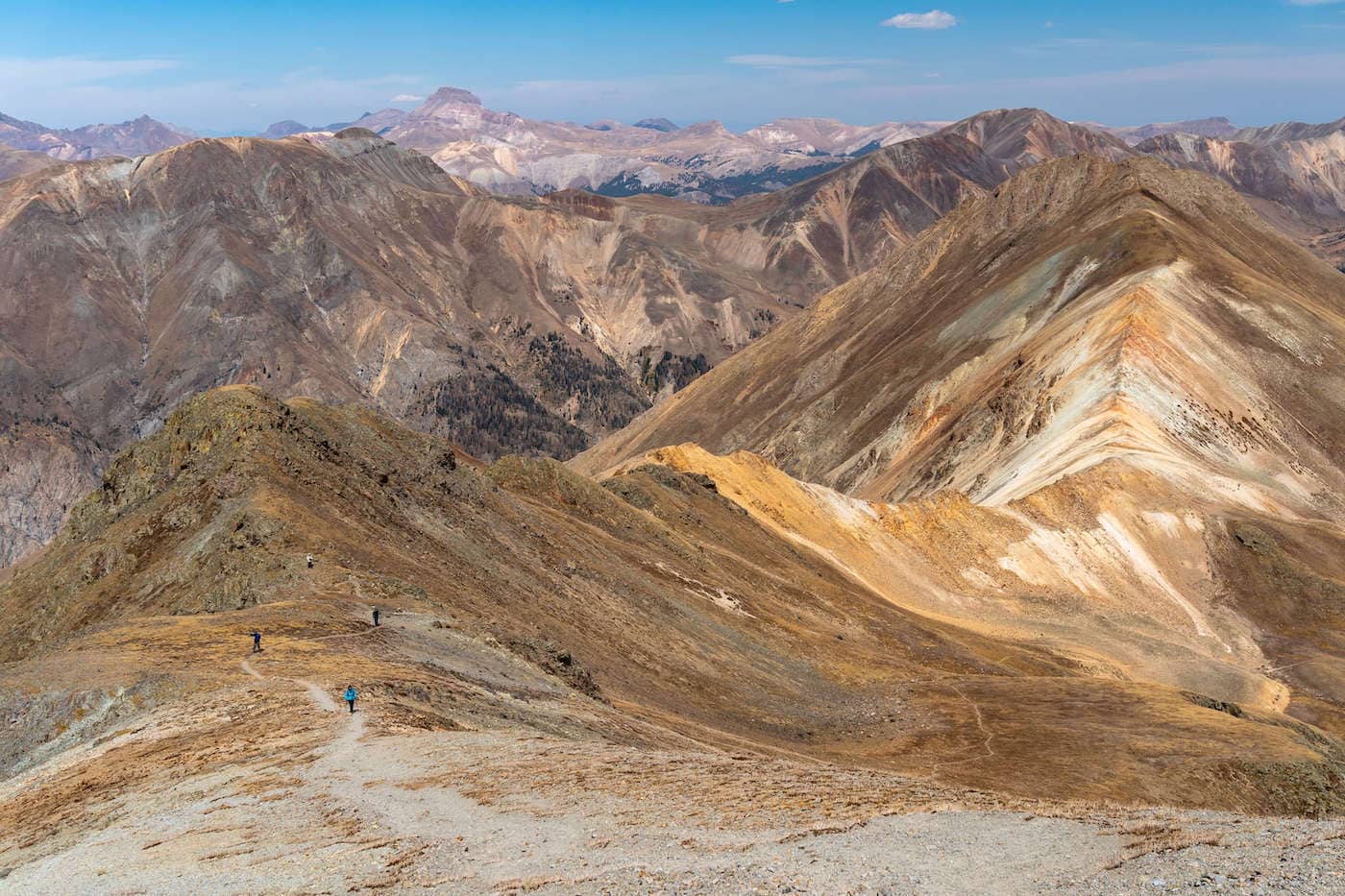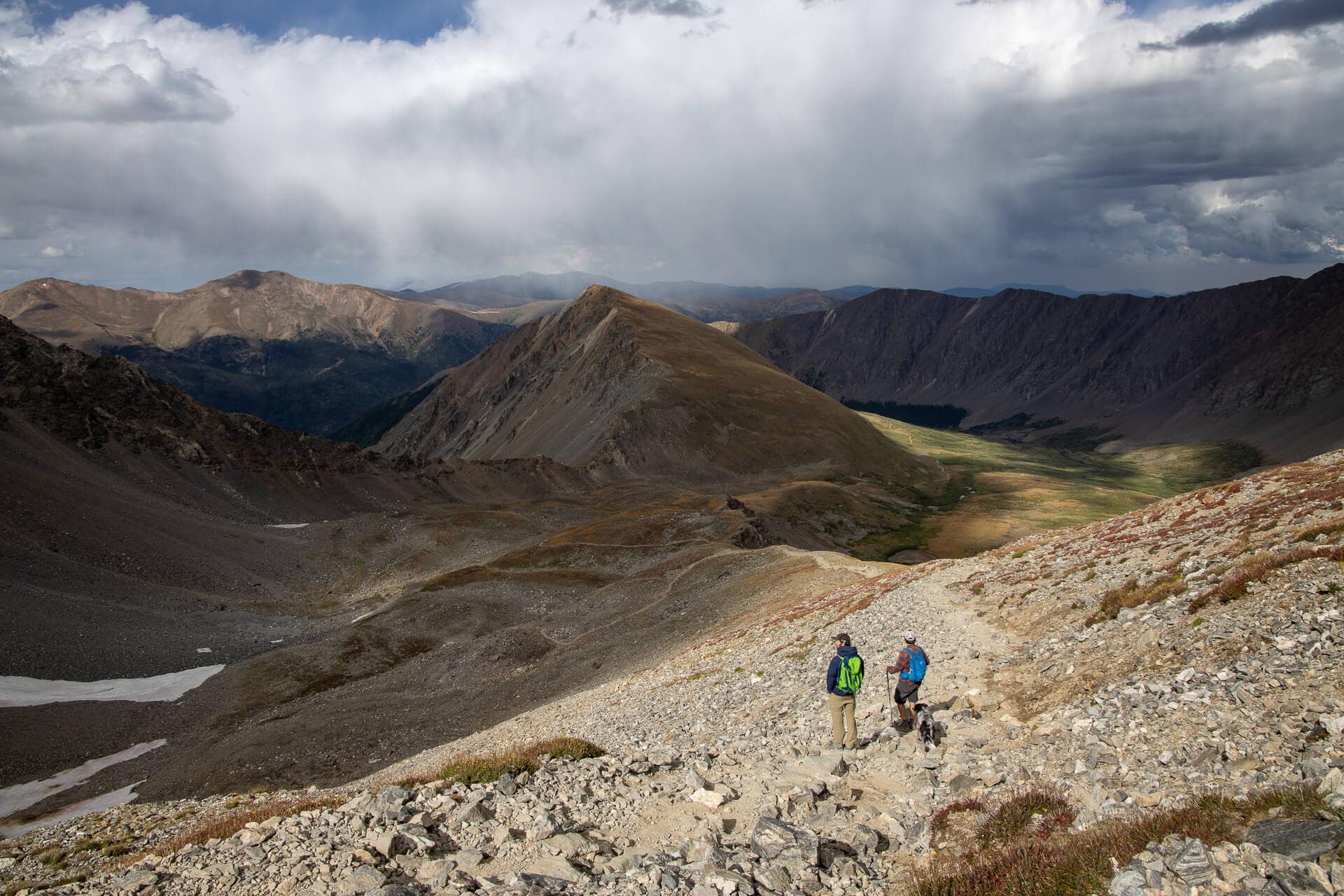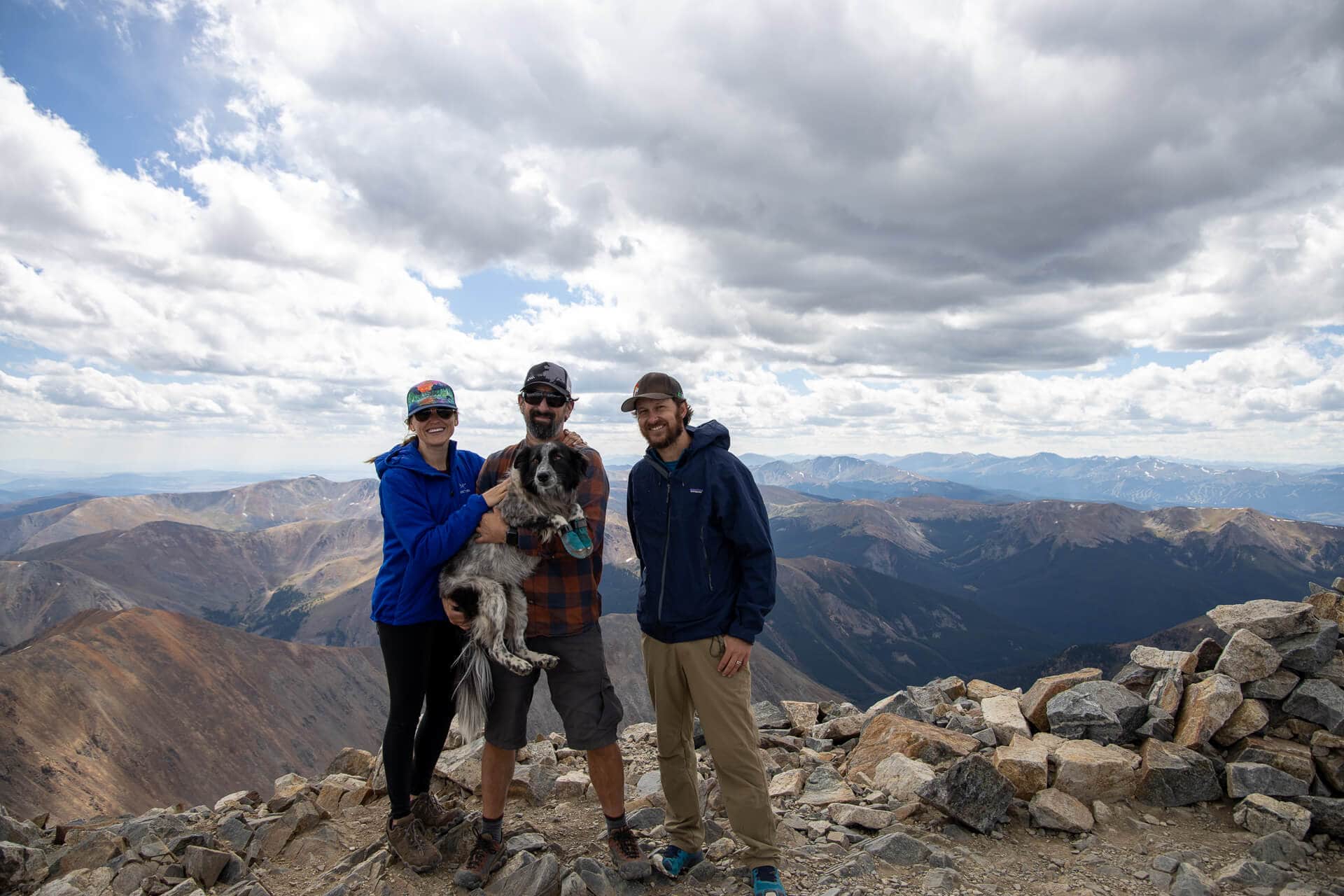Whether you’re new to hiking or you’re a seasoned trekker, climbing a Colorado 14er is on many adventurers’ bucket lists. Not only do these peaks pose a physical – and often mental – challenge, but they also give you access to some of the most beautiful and remote areas in the state including the Sawatch Range, Front Range, Elk Mountains, and beyond.
As you can probably guess, though, climbing to the top of a 14,000+ ft peak is no walk in the park, and preparing for such a hike can seem daunting. I’ve climbed a few 14ers and while it isn’t easy, the reward of standing on the top is definitely worth the effort. So to help you get ready for your first 14er, in this post we share our best tips on how to plan and prepare for your hike. Now go get those legs ready!
Ready to climb your first 14er? Here’s everything you need to know for a successful hike to the summit.
This post is inspired by a guest post originally written by Ben Thomas of Wild Imagining in 2015.
What is a 14er?
A 14er (or fourteener) is a mountain that rises over 14,000 feet above sea level. While there are 96 peaks that top 14,000+ feet in the US, the 54 that are scattered across the western half of Colorado are collectively known as the 14ers and these peark are what we’ll focus on in this post.

Choosing Your First 14er
Colorado’s fourteeners can range in difficulty from a challenging day-hike to full-on technical rock climbs that require a rope and a helmet. For your first 14er, it’s best to choose a peak that doesn’t require advanced technical skills.
There are plenty of resources out there to help you research trail options, but one of our favorites is 14ers.com which has detailed information on each of Colorado’s 14er’s. Some mountains have multiple trails to the top and we recommend choosing a trail labeled Class 1 or Class 2 since they’re the easiest, or go with the most common route.
If you’re not sure where to start, here are five great fourteeners for beginners:
- Mount Bierstadt from Guanella Pass
- Mount Sherman from Four Mile Road
- Mount Democrat from Kite Lake
- Gray’s Peak from the Gray’s Peak Trailhead
- Handies Peak from American Basin
Also, be sure to check and make sure that you can get to the trailhead. Some trailheads are located on rugged dirt roads that require a 4WD vehicle. Others are on roads that most normal cars can handle. Double-check before you go!

Tips for a Successful 14er Hike
Find a buddy
For your first time hiking a fourteener, it’s best to have at least one other person to hike with. Finding someone who is experienced with fourteeners would be best, but if you and a buddy want to tackle your first one together, make sure you are both prepared mentally and physically. Having someone along with you is especially helpful in case something goes wrong, be it altitude sickness, a sprained ankle, or if you need someone to cheer you on at mile 8.

Acclimate to the elevation
One of the best ways to avoid altitude sickness is to get acclimated. Basically, this means you are allowing your body to get used to the altitude gradually. If you are traveling into Colorado from a lower elevation, try to spend at least one night either in Denver or in the mountains before you climb your 14er. The more time you spend at altitude, the better adjusted your body will become. Altitude sickness is the most common problem people run into on their first fourteener, so try to give your body a day or two to acclimate to reduce your risk of feeling sick.
Hydrate & Fuel Up
Along with acclimatizing, drinking plenty of water and fueling up with a healthy meal the night before can help set you up for success. Being properly fueled and hydrated before you push yourself at altitude is crucial to preventing altitude sickness.
Check the weather
Do a last-minute check on the weather conditions for your hike and make sure it is still safe to go. Weather can change rapidly in the mountains, so if there’s a chance of a storm, it might be a good idea to postpone.
Get an early start
After all your planning and preparation, you’re ready to climb! Be sure to get an early start—we’re talking pre-sunrise. That way, you’re off the mountain (or at least back below treeline) before any notorious afternoon thunderstorms roll in. Keep an eye on the clouds and plan to turn around no later than noon or earlier if the weather turns sketchy. Getting caught in a lightning storm above the treeline is downright terrifying, not to mention life-threatening.
Pay attention to how you feel
As you are climbing, pay attention to YOU. Check-in on your hiking buddy too and see how they are doing, but do not push yourself too hard in an attempt to keep up. Hiking at altitude is difficult. You’ll get tired faster, breathe harder, and your heart will be pounding.
Have fun!
Finally, enjoy yourself! Soak in all the big mountain views. It may be harder than you expect, but push yourself safely and it will all be worth it. Remember, you don’t have to reach the top in order to have fun! Yes, the summit is the obvious goal, but if the weather is moving in early or you feel sick, don’t push your luck. The mountain will still be around later; your job is to make sure you will be too.

What Gear To Pack For Climbing a 14er
Now that you’ve chosen which peak to hike for your first 14er and we’ve covered some basic tips, it’s time to assemble your gear. While many 14ers can be done in half a day, you still need to have a backpack full of gear to hike them safely and responsibly. The weather can also change rapidly, so layering is crucial to your comfort. Below is a checklist of things you’ll want to bring with you, along with a few specific recommendations.
Clothing
Choose items of clothing that you can easily layer and that dry quickly. Avoid cotton clothing. Hiking up to over 14,000 feet will cause you to sweat and cotton does not dry fast enough. Wet clothes at the top will chill you to the bone, making for a miserable experience. For more specifics on what clothing to wear and pack, check out our post on What To Wear Hiking.
- Quick-dry short-sleeve or long-sleeve top
- Shorts and hiking pants
- Hiking socks
- Hiking boots or shoes with plenty of tread and ankle support. Be sure this isn’t your first time wearing new shoes!
- Warm mid-layer or insulated jacket
- Rain Jacket
- Gloves
- Hat
- Sunglasses
- Any extra layers for warmth depending on the weather forecast or if you know you get particularly cold.
Hiking Gear
Since you’ll be hiking for several hours and gaining quite a bit of elevation, you’ll want to be prepared with the right gear. For a more complete gear list, check out our post on Day Hiking Essentials.
- Small first aid kit
- Swiss Army Knife or Leatherman
- Sunscreen
- Trekking Poles (your knees will thank you)
- Camera
- A comfortable and durable hiking backpack that can fit everything.

Food & Water
Carefully plan how much water and food you’ll. It’s no fun being hungry on the trail! Worse, not bringing enough water can be dangerous.
- Bring at least 3 liters of water per person. Consider bringing a pack that can fit a 3-liter hydration reservoir.
- Choose easy-to-eat snacks like bars and trail mix to eat along the way and pack a lunch to eat at the top.
What peaks are you going to tackle this summer? Have you hiked any 14ers yet? Share your questions, tips, and experiences in the comments below.
The post Tips for Climbing Your First 14er appeared first on Bearfoot Theory.